The Governor's Palace at Williamsburg served as the official residence of seven British governors over several decades and during the Revolutionary War was the executive mansion of the first two governors of the Virginia Commonwealth, Patrick Henry and Thomas Jefferson. This English Georgian residence influenced much of the architecture built in the Colonies for the wealthy.
The Palace was rebuilt in 1930 on the foundations of the original building and accurate restoration was made possible by a drawing of Thomas Jefferson, an extant engraving of the front, and other surviving records and artefacts.
|
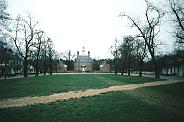
|
Distant view from the Palace GreenThe Duke of Gloucester Street, the main street of Colonial Williamsburg, is bordered on the north by a broad Green, beyond which is the Governor's Palace. Thus the town has two axes--the main one running east and west and this secondary axis, at right angles to the former. |
| The front has five bays of varying widths and the main building is essentially a square plan. Dependencies are at right angles to the main house. |
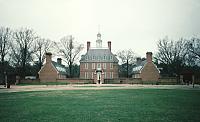
|
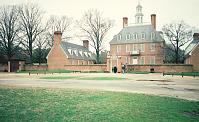
|
| |
|
The front with entrance gate and surrounding wallThe entrance gate pillars have the lion of England and the unicorn of Scotland carved in imported Portland stone. The complex is surrounded by a brick wall. |
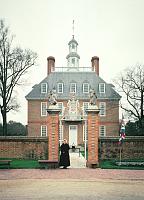
|

|
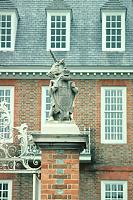
|
| |
|
The roof with dormers, a deck with a balustrade, and a high cupola |
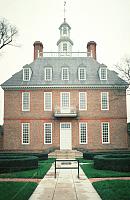
|

|
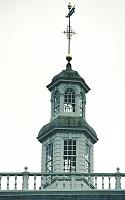
|


 Go to Williamsburg Architecture Index.
Go to Williamsburg Architecture Index. Click here to return to index of art historical sites.
Click here to return to index of art historical sites.
 Click here to return to index of artists and architects.
Click here to return to index of artists and architects.
 Click here to return to chronological index.
Click here to return to chronological index.
 Click here to see the home page of Bluffton College.
Click here to see the home page of Bluffton College.
